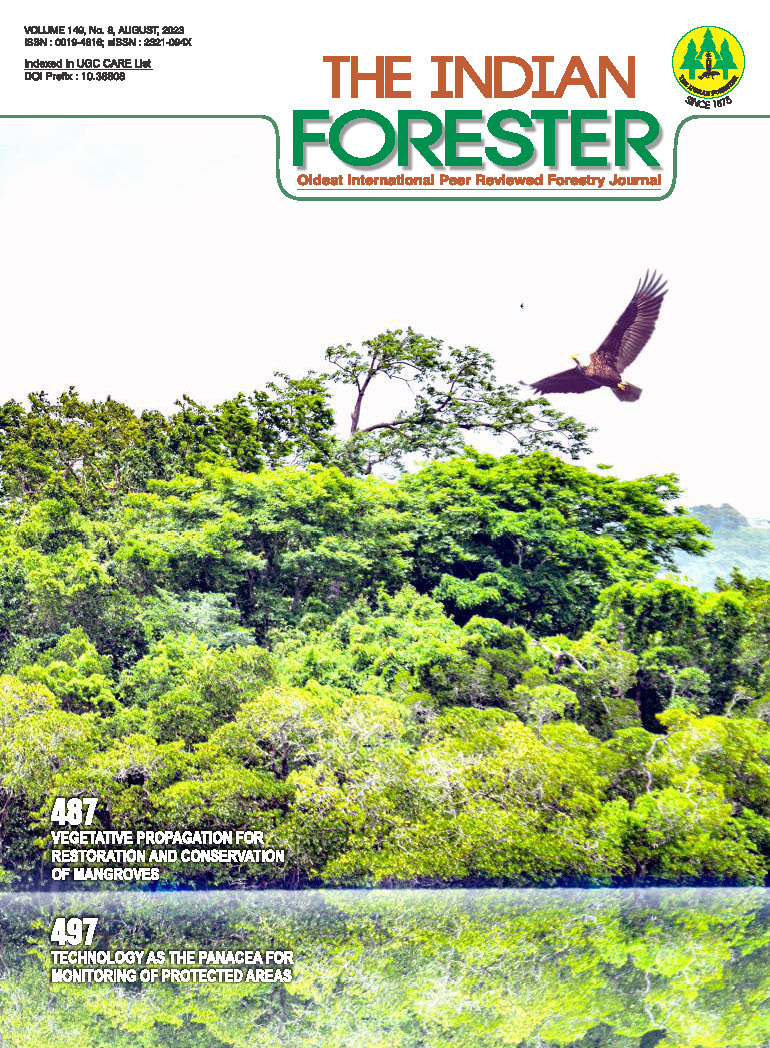Wild Ornamental Plants of Asteraceae of Karnataka
DOI:
https://doi.org/10.36808/if/2023/v149i8/169427Keywords:
Wild Ornamentals, Enhancing, Landscaping, Aesthetic, Employability, Asteraceae.Abstract
Beauty is the main trait of ornamental plants, hence these ornamental plants are primarily grown for their beauty either for color or aesthetic reasons. Ornamental plants are annual, biennial and perennials and these have magnificent role in creating employability and in developing economy at the local and regional level. The present investigation is about the wild ornamental plants of family Asteraceae of Karnataka with their utility and cultivation methods. Enhancing their values as ornamentals with respect to various ways of utilizing them either through as landscaping, fencing plants, indoor and outdoor pot plants. Their cultivation methods are also briefly discussed. These plants are available and found to be grown in wild. Hence these plants can be explored as potential ornamental plants which not only are important to mankind but also they can be developed as plants with enhanced aesthetic values which directly or indirectly plays role in adding value to the economy of the region where it is grown.References
Aghayeva P., Garakhani P., Huseynova A. and Ali-Zade V. (2018). Wild ornamental plants of the family asteraceae from the northeastern part of Azerbaijan. Chprnomors’k. bot. z., 14(3): 204-212.
Dvorykovskiy M.S. (1983). Ekologiyarasteniy. Moskva: Vysshayashkola, 188 p.
Gamble J.S. (1915). Flora of the Presidency of Madras, Vol.2, Adlard& Sons Ltd., London.
Hooker J.D. (1882). The Flora of British India, Vol. 3,Reeve & Co., London.
Jenomics W. (2008).The Greening of Art: Ecology, Community and the public domain. South African Journal of Art History, 23(1):175-189.
Kartikeyan S., Sanjappa M., Moorty S., Bhattacharjee B., Dash S.S., Meena S.H. and Mastakar V.K. (2020). Asteraceae: In Flowering. Plants, India. An Annotated Checklist 1 : 713 (Eds. A.A.Mao and S.S.Dash) B.S.I. Kolkata.
KavithaSagar (2018). Weed flora of Karnataka – Current status and Future prospects. World Journal of Pharmaceutical Research. Vol.7 (5).pp.1305-1311.
KavithaSagar (2019). A Handbook on weeds of Karnataka – a detailed study of weeds. Shodhmanthan, 10(6).
KavithaSagar (2019). Floristic diversity of Vijayanagara Sri Krishnadevaraya University campus Ballari. Indian journal of Plant Science. Vol.8 (1).pp.1-13.
KavithaSagar, Rajanna M.D. (2015). A Handbook on weeds of Karnataka. Centre for plant taxonomic studies. ISBN.978-93-5196-500-8.
KavithaSagar, Eriswamy K. and Sharanabasav A. (2021). Floristic diversity of Moka. Indian Journal of Plant science, 10: 36-41
Panero J.K. and Funk V.A. (2002). Toward a phylogenetic sub familial classification for the composite (Asteraceae). Proceedings of the Biological Society of Washington. Biodiversity Heritage Library, 115: 909-922.
Ramaswamy S.V. and Razi B.A. (1973). Flora of Bangalore District, Prasaranga, University of Mysore, Mysore.
Seetharam Y N., Kotresha K. and Uplaonkar S.B. (2000). Flora of Gulbarga District, Prasaranga, Gulbarga University, Gulbarga.
Sharma B.D., Singh N.P., Raghavan R.S. and Deshpande U.R. (1984). Flora of Karnataka analysis, Botanical survey of India. Howrah, Series 2.
Singh NP (1988). Flora of Eastern Karnataka, Mittal Publications, New Delhi, Vols. 1–2.
Swarup V. (1998). Ornamental horticulture. Macmillan Indian Limited, New Delhi.
The plant list: Compositae. The Plant List (www.theplantlist.org). Royal Botanic Gardens Kew and Missouri Botanic Garden. 2013..
Wang Xu, Daljit Singh, Sandeep Marla, Geoffrey Morris and Jesse Poland (2018). Field based high throughput phenotyping of plant height in sorghum using different sensing technologies. Plant methods.
Downloads
Downloads
Published
How to Cite
Issue
Section
License
Unless otherwise stated, copyright or similar rights in all materials presented on the site, including graphical images, are owned by Indian Forester.





